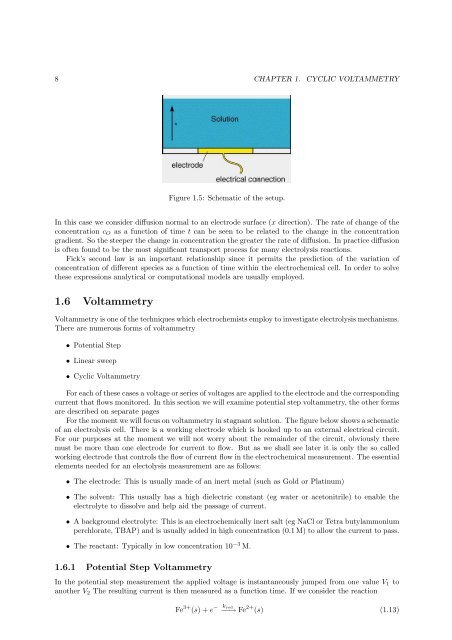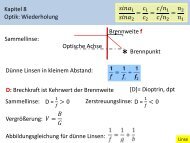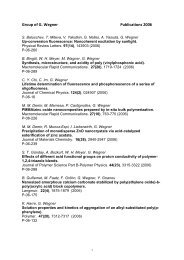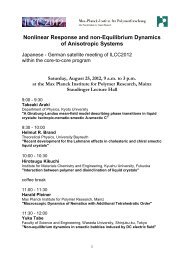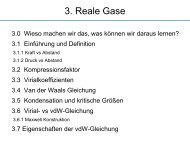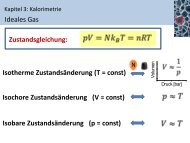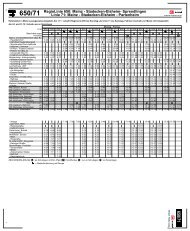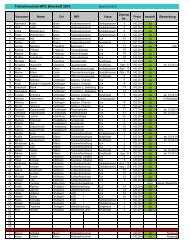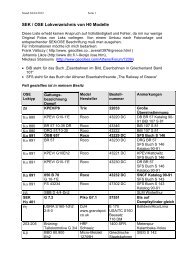Cyclic Voltammetry
Cyclic Voltammetry
Cyclic Voltammetry
You also want an ePaper? Increase the reach of your titles
YUMPU automatically turns print PDFs into web optimized ePapers that Google loves.
8 CHAPTER 1. CYCLIC VOLTAMMETRY<br />
Figure 1.5: Schematic of the setup.<br />
In this case we consider diffusion normal to an electrode surface (x direction). The rate of change of the<br />
concentration cO as a function of time t can be seen to be related to the change in the concentration<br />
gradient. So the steeper the change in concentration the greater the rate of diffusion. In practice diffusion<br />
is often found to be the most significant transport process for many electrolysis reactions.<br />
Fick’s second law is an important relationship since it permits the prediction of the variation of<br />
concentration of different species as a function of time within the electrochemical cell. In order to solve<br />
these expressions analytical or computational models are usually employed.<br />
1.6 <strong>Voltammetry</strong><br />
<strong>Voltammetry</strong> is one of the techniques which electrochemists employ to investigate electrolysis mechanisms.<br />
There are numerous forms of voltammetry<br />
• Potential Step<br />
• Linear sweep<br />
• <strong>Cyclic</strong> <strong>Voltammetry</strong><br />
For each of these cases a voltage or series of voltages are applied to the electrode and the corresponding<br />
current that flows monitored. In this section we will examine potential step voltammetry, the other forms<br />
are described on separate pages<br />
For the moment we will focus on voltammetry in stagnant solution. The figure below shows a schematic<br />
of an electrolysis cell. There is a working electrode which is hooked up to an external electrical circuit.<br />
For our purposes at the moment we will not worry about the remainder of the circuit, obviously there<br />
must be more than one electrode for current to flow. But as we shall see later it is only the so called<br />
working electrode that controls the flow of current flow in the electrochemical measurement. The essential<br />
elements needed for an electolysis measurement are as follows:<br />
• The electrode: This is usually made of an inert metal (such as Gold or Platinum)<br />
• The solvent: This usually has a high dielectric constant (eg water or acetonitrile) to enable the<br />
electrolyte to dissolve and help aid the passage of current.<br />
• A background electrolyte: This is an electrochemically inert salt (eg NaCl or Tetra butylammonium<br />
perchlorate, TBAP) and is usually added in high concentration (0.1 M) to allow the current to pass.<br />
• The reactant: Typically in low concentration 10 −3 M.<br />
1.6.1 Potential Step <strong>Voltammetry</strong><br />
In the potential step measurement the applied voltage is instantaneously jumped from one value V1 to<br />
another V2 The resulting current is then measured as a function time. If we consider the reaction<br />
Fe 3+ (s) + e − kred<br />
−−→ Fe 2+ (s) (1.13)


